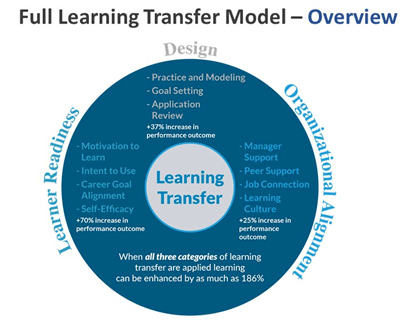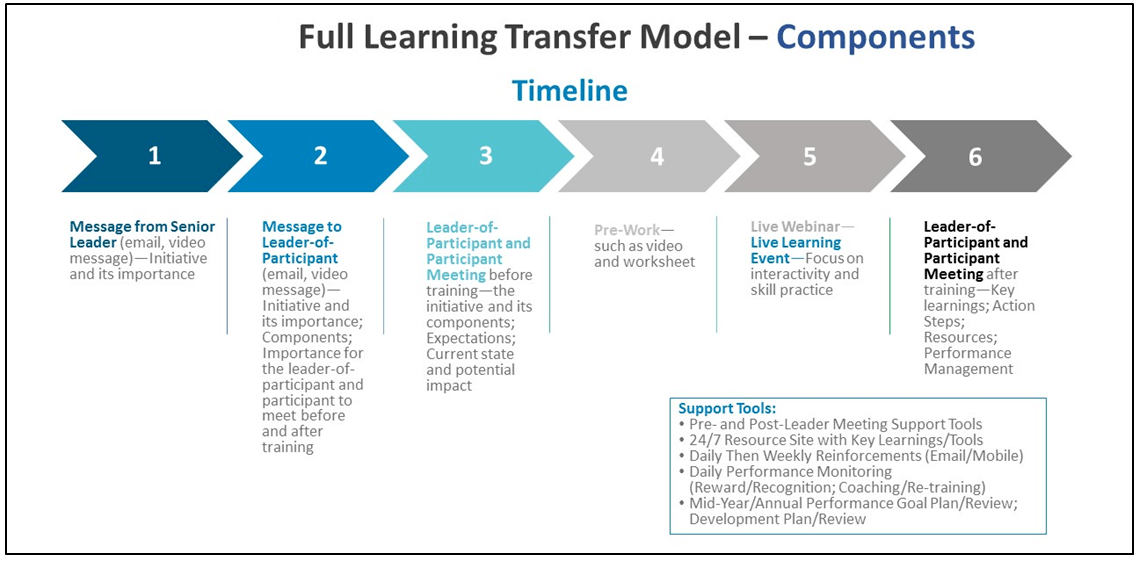How To Succeed In User Adoption Of New Systems
This could be solved with the User Adoption Full Learning Transfer Model and User Adoption Full Change Management Model to ensure user adoption. For a reasonable added effort, you can move from a substantial failure rate to a near 100% success rate—and this article will show you how. Imagine the benefits to you and your company’s user adoption, performance, and business impact.
Critical Need/Solutions
According to Gartner, approximately 75% of all system implementation projects fail because of end user adoption problems. The causes of poor user adoption are found throughout the training and change management systems. User Adoption Full Learning Transfer Model and User Adoption Full Change Management Model ensure the desired user adoption.
We’ve lost count regarding how many times we’ve been asked to help a company with new systems adoption—analysis discovers that this was the third or fourth software the company had attempted to use for the same purpose. When user adoption was low, it was always presumed that the wrong software was implemented, when the causes lay in lack of or poor training and change management.
User Adoption Full Learning Transfer Model
So now that you know that you need training and change management, why read further? Just do it. But what you also don’t know and vendors never share is that 80% of training does not improve user adoption to desired levels. The causes of poor learning are throughout the learning system and exponentially increase as they get closer to the learning event. The User Adoption Full Learning Transfer Model (UAFLTM) contains those factors closest to the learning event and are the most impactful to the learning event’s effectiveness.
Overview
Three main areas affect user adoption training effectiveness—Learner Readiness, Design, and Organizational Alignment. When all three areas of learning transfer are addressed, user adoption training effectiveness can be enhanced as much as 186%. Learner Readiness can increase user adoption performance outcomes by 70%. It comprises motivation to learn, intent to use, career goal alignment, and self-efficacy. Design can increase user adoption performance outcomes by 37%. It comprises practice and modeling, goal setting, and application review. Organizational Alignment can increase user adoption performance outcomes by 25%. It comprises manager support, peer support, job connection, and learning culture.

Components
How do those three main areas break down into actual UAFLTM components/deliverables? An effective user adoption training initiative begins with a message from a Senior Leader regarding the initiative and its importance. This is followed by a message to Leader-of-Participant regarding the initiative and its importance, components of the user adoption training initiative, and the importance of the Leader-of-Participant and Participant to meet before and after training.
During the meeting before the user adoption training, the Leader-of-Participant and Participant explore the initiative and its components, leader expectations, and the current state and potential impact of the user adoption training. The user adoption training can be preceded with pre-work such as a video and worksheet. The training takes place focusing on interactivity and skill practice. During the meeting after the training, the Leader-of-Participant and Participant Meeting explore key learnings, planned action steps, resources, and performance management.
Support tools for the user adoption training are also developed such as pre- and post-leader meeting support tools, 24/7 resource site with key learnings/tools, daily then weekly reinforcements (via email/mobile), daily performance monitoring by the Leader-of-Participant (resulting in reward/recognition, coaching/re-training), and mid-year/annual performance goal plan/review, and development plan/review.

So How Is It Done?
While those additional UAFLTM components look like a lot of extra effort, they can all be done in just one or two additional development days and with little extra expertise. This is a comparatively small effort compared to the huge impact of moving from an 80% failure to near 100% success rate.
First, identify the highest-level key stakeholder/sponsor for your user adoption and training and build and implement your communication plan, including a message from the key stakeholder/sponsor to participants and their leaders—including the user adoption training initiative and its importance. Also, include a message to the Leader-of-Participant regarding the initiative and its importance, components of the user adoption training initiative, and the importance for the Leader-of-Participant and Participant to meet before and after the training.
Second, create two quick reference guides (QRGs) for Leaders-of-Participants detailing how to conduct their meetings with the participants before and after the user adoption training.
Finally, use the user adoption training content to create pre-work, a resource site with key learnings and tools provided immediately after the training and available 24/7 for just-in-time use, and a number of short reinforcements regarding key learnings to email daily and then weekly after the training. Then launch!
User Adoption Full Change Management Model (UAFCMM)
So now you’re aware you must include training and the User Adoption Full Learning Transfer Model (UAFCMM) to go from a high user adoption failure rate to an almost 100% success rate. But change management best practices must also be used because both user adoption and training are change initiatives. Without those best practices, 70% of change initiatives fail.
Good news! Change management best practices are almost identical to the UAFLTM. They include developing and implementing the following plans: key sponsorship, communication, training, coaching, and resistance. Notice how the first four are explicitly implemented through the UAFLTM and the fifth bullet is implied.

Case Study
An international professional services network chose SAP to replace the existing operations and data management systems for their internal as well as external clients.
Requirement
Developing and executing training programs were part of this change adoption. While the Subject Matter Experts (SMEs) were set to verify that the content was accurate and current, it was the responsibility of the Learning and Development team to provide a brand new face to the information delivery itself.
Solution
1,700 hours of training were created while providing an integration of various methods of training. In some cases, the training needed to upskill current users with the recent updates to this software; while in other cases, the users were completely new to SAP. What needed to be done was to deliver courses that achieved a Bloom’s level three (Application) for a varied audience with the help of domain experts along with minimal direct SME interaction.
The solution included:
- WBTs, VILTs, and traditional Instructor-Led Training (ILT) delivering the information and relating live experiences and anecdotes during the period
- Working closely with ~20 executives and key leaders for global training deployment and transformation
- Conducting Change Readiness Assessments across the project lifecycle to understand end users’ needs and concerns
- Creating a feedback process for both organizational leadership and end users as well as a mechanism for identifying and incorporating lessons learned
- Working with the client to build a training program that would meet the learning needs of the global audience
- Partnering with client’s Learning and Development leaders to develop a global, comprehensive approach to training that would include webinars, eLearning, and an immersive instructor-led classroom experience
- Drafting scenario-based training materials appropriate for an immersive instructor-led classroom experience
- Collaborating with the cross-functional project team to ensure accuracy of content and business relevance in the training curriculum and materials
- Training deployed across the US, Canada, EMEA, Brazil, and APAC
A greater objective was envisioned: giving learning a new dimension in blending all these modes of delivery.
Results
Designing and developing engaging training materials and launching them within tight deadlines was the prime concern. Enriched with interactivities, animations, and case studies, the program provided an exploratory and engaging environment for learners. Delivering all training in the aggressive timelines was a feat in itself. The partners demonstrated an excellent partnering model, which created a win-win situation for all parties involved. The client was extremely delighted. The company achieved milestones, revenue, repeat business, future business from some of the Member Firms, and above all, customer satisfaction.
References:
- User Adoption Full Learning Transfer Model
- IPILT Conversion to VILT Processes and Best Practices
- Virtual Learning Transformation Best Practices









